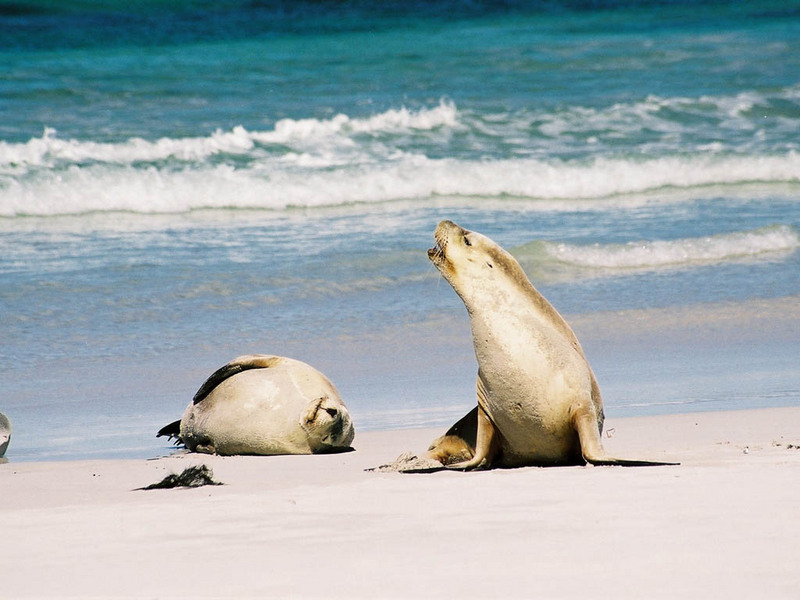Australian Sea Lion (Neophoca cinerea) - Wiki Australian Sea Lion
From Wikipedia, the free encyclopedia
[Photo] An Australia Sea Lion (Neophoca cinerea) vocalizing. Source: http://www-personal.umich.edu/~popec/images/au_22.jpg Date April, 2002. Author Cody Pope www-personal.umich.edu/~popec
The Australian Sea Lion (Neophoca cinerea) is a species of sea lion that breeds only on the south coast of Australia. Today there are about 12,000 Australian Sea Lions following the introduction of the Australian National Parks and Wildlife Act of 1972 which prohibited a harvest that began in earnest as soon as Europeans colonised the continent.
The Australian Sea Lion inhabits the ocean around Australia, and nowhere else. They only eat at sea, where they hunt fish, squid, and other sea creatures. They have front-flippers that allow them to propel quickly through water and be more agile on land by being able to walk on all four flippers.
The breeding cycle of the Australian sea lion is unusual within the pinniped family. It is an 18 month cycle and is not synchronized between colonies. The duration of the breeding season can range from 5 to 7 months and has been recorded for up to 9 months at Seal Bay on Kangaroo Island.
Bulls do not have fixed territories during the breeding season. The males fight other males from a very young age to establish their individual positions in the male hierarchy and during the breeding season, dominant males will guard females for the right to breed with her when she comes into oestrus. A female comes into season for about 24 hours within 7 to 10 days after she has given birth to her new pup. She will only look after the new pup and generally fights off the previous season's pup if it attempts to continue to suckle from her.
Two females from the July 2001 breeding season were observed having their first pups where they were born. The females were part of a research project where 55 pups from that season were observed from the date of birth and their birth locations were also recorded. The females have proven a theory that the birth sites of the females are extremely important in their selection of future birth sites for their pups, which is another reason why the protection of existing colonies is so important to the species.
http://en.wikipedia.org/wiki/Australian_Sea_Lion
| The text in this page is based on the copyrighted Wikipedia article shown in above URL. It is used under the GNU Free Documentation License. You may redistribute it, verbatim or modified, providing that you comply with the terms of the GFDL. |
